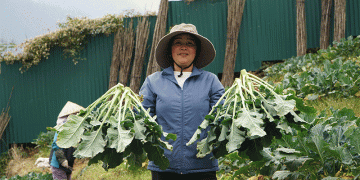#PlantPathology #CropDisease #FungalOutbreak #AgriculturalImpact #PhomaPrevention #BlacklegManagement
Blackleg fungus, scientifically known as Phoma Lingam, is a pathogen that affects the brassica family of crops, including canola, cabbage, and broccoli. This fungus can cause severe damage to plants, reducing yields and quality of produce. In this article, we will discuss the development of the blackleg fungus outbreak, the consequences it has on agriculture, and possible measures to prevent and manage its spread.
The blackleg fungus outbreak began in Europe in the 1970s, but it has now spread to other continents, including North America and Australia. The fungus can survive in soil and plant debris for up to four years, making it difficult to control its spread. Its spores can also travel long distances through wind and water, infecting healthy crops in new areas.
When blackleg fungus infects plants, it causes dark lesions to form on stems and leaves. These lesions can girdle stems, reducing the flow of nutrients and water to the rest of the plant. As a result, the plant can wilt, and its leaves may turn yellow or brown. In severe cases, the plant may die, leading to a loss of yield and income for farmers.
To prevent and manage blackleg fungus, farmers can implement various measures. Crop rotation is one of the most effective ways to reduce the risk of infection since the fungus can survive in soil and plant debris. Farmers can also use resistant varieties of crops, which are less susceptible to the fungus. Fungicides are another option, but their effectiveness can vary depending on the timing of application and the severity of the infection.
The blackleg fungus outbreak caused by Phoma Lingam can have a significant impact on agriculture, reducing yields and quality of produce. Farmers must take measures to prevent and manage the spread of this fungus to minimize its impact. Crop rotation, resistant varieties of crops, and fungicides are some of the options available to manage the disease.































